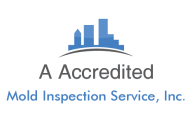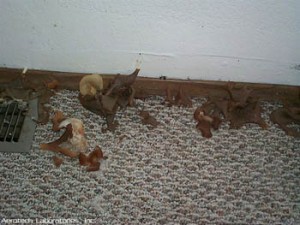 CARPET MOLD FROM A SOUTH FLORIDA MOLD TESTING COMPANY Part II
CARPET MOLD FROM A SOUTH FLORIDA MOLD TESTING COMPANY Part II
If you are looking for a mold testing company in South Florida click here. For part one of this article on carpet mold click here.
In part one of this article, we discussed moldy carpets. Here we discuss solutions that may be implemented when dealing with carpet mold problems.
This is a photo of a moldy carpet with mushrooms.
SOLUTIONS
CARPET VACUUMING
Vacuuming is best for dirty dusty carpets that may harbor a moderate number of spores and dust. A HEPA filter on your vacuum keeps spores and allergens from blowing back into the home’s air during cleaning.
Without a dirty or dusty food source, and without a moisture source, carpet mold cannot grow. If you keep a carpet dry, and if you vacuum regularly with a good quality vacuum, it will prevent a mold problem from occurring. It is that “regular vacuuming” part that gets us.
Please heed this warning: If your carpet truly has a carpet mold problem with serious mold growth, or water damage. Do not vacuum. Even if it has been in contact with high humidity an no water do not vacuum. In such cases, vacuuming will very likely be the worst thing you can do. Vacuuming carpets with true mold problems will only stir up millions of spores and blow them into your face. If the carpet is truly moldy mold testing may be needed to determine the extend of the problem. In addition, if it is moldy then it should always be removed by a professional mold remediator.
SHAMPOOING OR STEAMING
A carpet that is harboring too many spores, dust, dirt, and allergens, may benefit from professional cleaning. Before any other cleaning methods are employed you should vacuum the carpet first. Not doing so may result in wet dirt and spores being pushed deep into your carpets. Using too much water and not drying it out will turn your carpet into a smelly mold breeding ground.
Above all, the company you hire must make sure the carpet dries quickly after they steam clean or shampoo your carpet. This is of the up most importance. If a carpet is allowed to remain moist after cleaning, microbial growth will start off from where it stopped the last time the carpet was wet. In such cases strong musty odors will be produced very quickly after wetting occurs. Often these odors alone will cause health complaints. If your carpet does smell musty very shortly after steam cleaning or shampooing it is a sign of a problem. It means the added water managed to wake up the dormant mold or bacteria. In other words, it is a sign that existing problematic fungal or bacterial contamination in your carpet has been activated by the recent addition of moisture.
CHOOSING THE RIGHT COMPANY
Make sure the techs cleaning your carpet are certified, licensed, and experienced. Also make sure the tech who you hire has good reviews. Anyone cleaning your carpet should follow standards such as BSR-IICRC S100. You can go to the IICRC website to search for carpet cleaners and mold remediators in your area.
Some tips for preventing mold in carpets after shampooing includes:
1) The use of as little water as possible when shampooing carpets.
2) Make sure to run your AC so the carpet can dry properly after shampooing.
3) Elevate furniture above the carpet when possible so water does not become trapped under furniture.
CARPET REPLACEMENT
Removing dirt, dust, settled spores, pollen, and dust mites from carpets may no longer be a reasonable task after a carpet has reached a certain level of contamination. If steam cleaning or shampooing produces odors, and if vacuuming has not proved productive, it may be best to replace dirty old carpets with a new carpet. For people suffering from asthma, mold allergy, and dust mite allergy, replacing carpet with tile, linoleum, or wood is best.
REMEDIATION
As stated above, a truly moldy carpet should not be cleaned, it should be removed by a mold remediator. Such remediators can remove moldy or water damaged carpets, tack strips, and carpet padding. During remediation of truly moldy carpets, baseboards or other building materials may need to be removed. Mold testing and inspections by a separate company from the remediation company may help. Such a company can determine if your carpet needs vacuuming, cleanings, replacement, or remediation. At A Accredited Mold Inspection Service, we provide mold testing in South Florida. If you need our services click here.
CONCLUSION
In conclusion, homeowners are often very concerned with small amounts of visible mold on walls. However, it is the massive amounts of unseen contamination in large carpets that may be more of a problem. If you live in a home with 2,000 square feet of carpet, that carpet can become a 2,000 square foot miniature microbial ecosystem in your own home. It may become a breeding ground and hiding place for dust mites, dirt, and fungal organisms. Therefore, when this happens, it is time to vacuum, clean, replace, or remediate your carpet.
A Accredited Mold Inspection Service provides mold inspections and mold testing in South Florida. If you need professional mold testing, contact us. For part one of this article on carpet mold click here.
1-888-381-6651.


